Last updated on November 24th, 2023
South Carolina is the 23rd most populous and the 40th most extensive of the 50 states of the United States. It is in the South-eastern United States and the easternmost of the Deep South. The state attained statehood on May 23, 1788, becoming the 8th State to join the union. Its two bordering states are Georgia and North Carolina. See the complete list of the 50 states and their borders here. South Carolina (nicknamed: Palmetto State) has 46 counties. The state’s capital is Columbia. The abbreviation for South Carolina is SC. Peach is the State Fruit. With these facts about South Carolina, let us learn about its history, geography, economy, people, culture, and more.
Facts About South Carolina
1. The state was named after the King Charles I and King Charles II of England.
2. The first attempt made by Europeans to settle in South Carolina was in 1651. The Spanish explorers from Santo Domingo failed to do so.
3. Charles Town, the site of the first European settlement was renamed to Charleston in 1783.
4. South Carolina is one of the original thirteen colonies.
5. The geographical shape of the state resembles an inverted vertical triangle. From east to west, the state stretch some 460 km while between north and south it measures 360 km.
South Carolina on the map
6. South Carolina was the first state to secede from the Union on December 20, 1860, citing frequent violations of the Constitution by the Federal Government and increasing hostilities directed at slave-holding states.
7. In South Carolina, there are many towns with weird and silly names. Some of these town names are Pumpkin town, Possum Kingdom, Nine Times, and Ninety Six.
8. South Carolina fought 137 battles during the Revolutionary War. The last of these battles happened on November 14, 1782 on Johns Island.
9. On April 12, 1861, Confederate troops fired shots at Fort Sumter in Charleston Harbor. This is considered the first shot that began the Civil War.
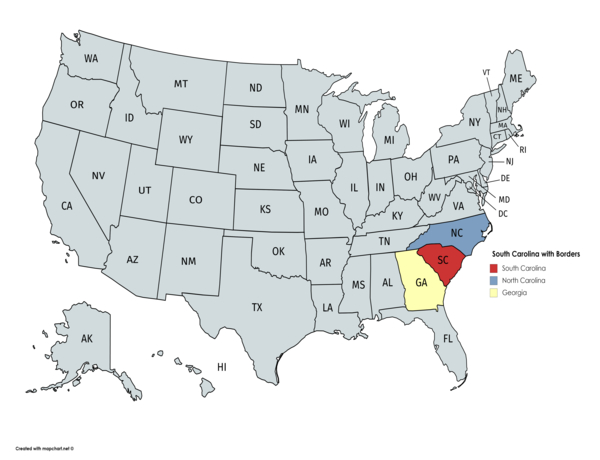
10. About two-third of the City of Columbia burned down during the Civil War in 1865. That is why there are few original buildings in the city.
11. Two of the most important battles in the history of the United States were fought in South Carolina – the Battle of King’s Mountains and the Civil War.
12. The USS Yorktown, also known as ‘The Fighting Lady,’ a submarine destroyer, played a significant role in World War Two. It is moored at Patriots Point, SC.

13. On a historical note, Patriots Point at Charleston Harbor is home to several naval craft. The collection of ships includes ‘The Ship That Would Not Die,’ the USS Laffey.
14. Fort Jackson, the largest United States Army installation for Basic Combat Training is in Columbia, South Carolina.
15. Saint Cecilia Society was the first musical society in South Carolina. It was formed in 1766 and gave its first concert by the end of that year.
16. Dock Street Theatre in Charleston was the first building used for theatrical performances in the history of the US. It opened on February 12, 1736.
17. The Shag is the state dance of South Carolina. The Shag is popular among tourists visiting Myrtle Beach. This upbeat dance was created by workers who worked in Myrtle Beach in the 1940s.
18. The state of South Carolina has been popular for the filming of many Hollywood movies. Some especially notable movies are: “The Notebook,” “Forrest Gump,” “The Patriot,” and “Sleeping with the Enemy,” among others.
19. Anderson nicknamed “The Electric City” is the place where the first successful long-distance transmission of electricity in the south occurred.
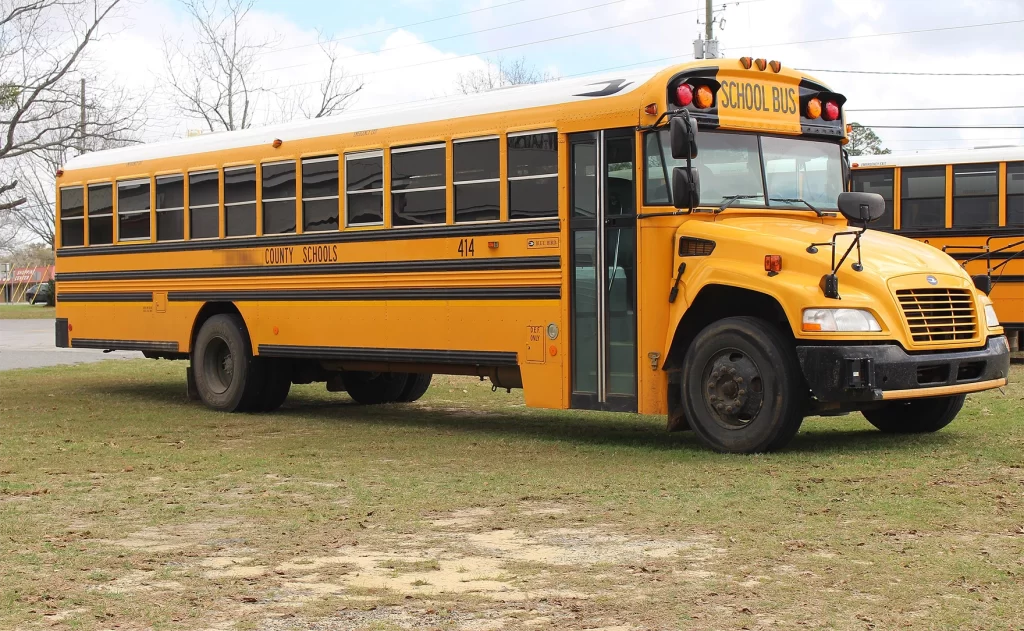
20. In 1969, it rained non-dairy creamer when the local creamer manufacturer encountered a mechanical problem with its exhaust vents. The vents became clogged which resulted in puffs of non-dairy creamer being expelled into the air. When it rained, the creamer mixed with rain which resulted in weird, creamy rain.
21 – 40 facts about South Carolina
21. Textile manufacturing and tourism are the two main industries of the state.
22. South Carolina is the only state in the US where any sobriety tests must be videotaped. Breath tests must also be captured on video by the arresting officer.
23. SC is the only state in America that owns and operates its own fleet of school buses.
24. South Carolina still has a strong Gullah influence, most notably in food and basket-weaving. The Gullah people are descendants of African slaves brought from West Africa to work and harvest in the many plantations that dotted the state.
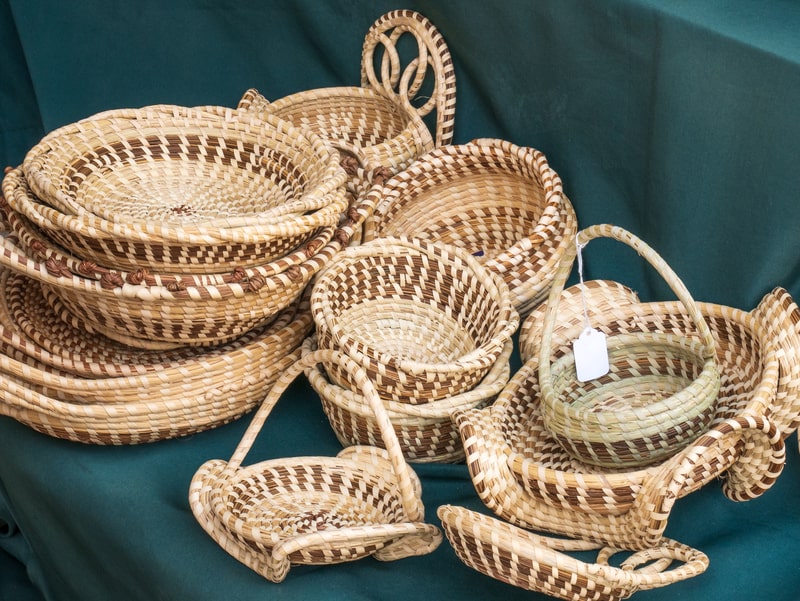
25. Sweet grass basket weaving is a traditional weaving technique brought to the Carolinas by West African slaves. Sweetgrass baskets are among the most popular cultural souvenir items guests can bring home when they visit the state.
26. Johnston calls itself the “Peach Capital of the world.”
27. South Carolina is the leading producer of peaches east of the Mississippi River.
28. According to the U.S. Department of Agriculture, South Carolina is second to California in overall peach production. Aside from peaches, it is also a major producer of apples.
29. Before South Carolina was known as the Peach State, it was the Iodine State. The Iodine State was emblazoned on their license plates earlier before the adoption of the Peach State as the states’ nickname.

30. The first tea farm in the U.S. was created in 1890 near Summerville. South Carolina is the state in which sweet tea originated. The city of Summerville offers the “Sweet Tea Trail,” which is a tour of the early plantations that existed downtown. After the trail tour has ended, visitors get to meet Mason, the largest sweet tea (container ya koi aur word) in the world. Mason happily gives away over 2500 cups of ice-cold sweet tea to visitors on a regular basis.
31. Many people refer to sweet tea as a “southern thing,” but since it originated in South Carolina, it’s really a “South Carolina thing.” It is also called as “The Champagne of the South”.
32. People are surprised to learn that although sweet tea is the state’s hospitality drink, it is not the official state drink. The state drink of South Carolina is actually milk.
33. The Charleston Tea Garden is the only commercial tea plantation in the US and is located on Wadmalaw Island, 20 miles south of Charleston. It is owned by the Bigelow Tea Company and sits on 127 acres which holds 320 varieties of tea. The plantation’s tea bushes come from cuttings descended from the original tea plants that were brought to the state by botanist Andre Michaux.
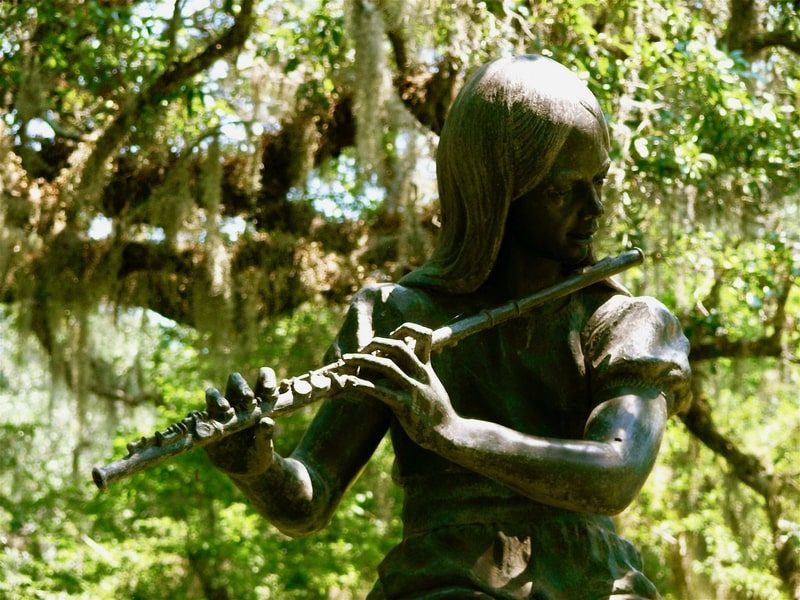
34. Brookgreen Gardens is home to the country’s first public sculpture garden and the largest collection of outdoor figurative sculptures in the world.
35. Bradford Watermelon is an oblong-shaped watermelon known for its sweetness and is only grown in two plots, one on a farm outside of Sumter, South Carolina, and the other outside of Seneca, South Carolina. Both plots are run by the Bradford family.
36. The Palmetto tree is the official state tree of South Carolina. During the Revolutionary War, Palmetto trees were used to manufacture hats, flooring and hammocks. The same tree is displayed proudly on the state flag.
37. The nickname of the state “Palmetto State” originates from the fact that during the Revolutionary War, colonists at Fort Moultrie defeated a British fleet near Charleston in 1776. On June 28, 1776, the Royal Navy attacked Fort Moultrie on Sullivan’s Island. The attack lasted nine hours before they gave up and retreated. Fort Moultrie was built out of palmetto logs mounted on top of sand walls. Due to the palmetto logs’ spongy consistency, the fort was able to repel cannon attacks because the cannonballs fired by the British simply bounced off the spongy palmetto walls. William Moultrie was in charge of defending the Island fort named after him.
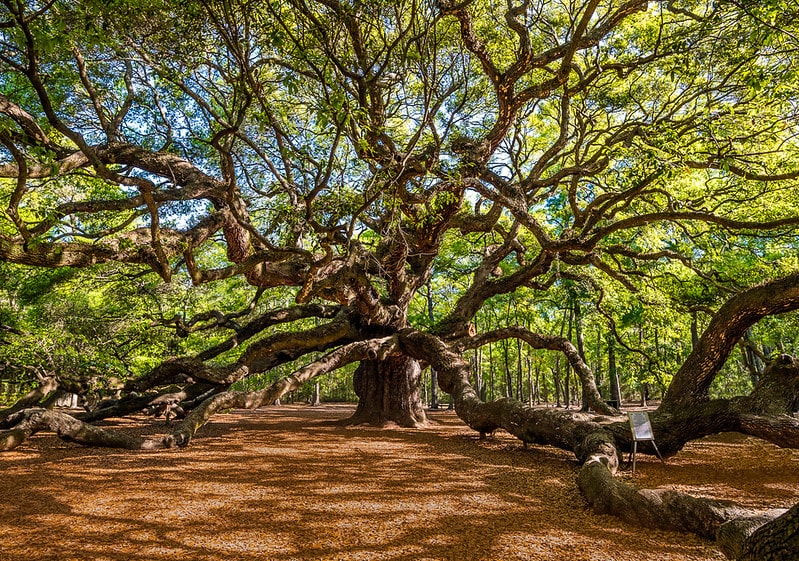
38. A tree in SC called the Angel Oak is expected to be between 400 and 500 years old. The 65-foot-tree has survived hurricanes, floods and earthquakes. According to some sources, the age of the tree is believed to be more than 1,500 years. This old tree is gargantuan and stands about 66 ½ feet tall and is 28 feet wide in circumference. It’s huge branches and plentiful leaves provide enough shade to cover a 17,200 square feet area.
39. South Carolina is home to the world’s biggest ginkgo farm. It was established by Garnay Inc in Sumter in 1982. The farm is home to more than 12 million trees.
40. Black River Swamp Preserve is a privately-owned nature preserve that runs eight kilometers along the Black River. It is home to endangered birds like the swallow-tailed kite. The Black River is named as such because of the tea-like color of the water derived from the tannins of the leaves of the hardwoods that grow in the forest and the banks of the river.
41 – 60 facts about South Carolina
41. The beautiful red and green plant, poinsettia, was named after the first US ambassador to Mexico in 1825. It was introduced to the US when Joel Roberts Poinsett sent samples to his home in South Carolina.
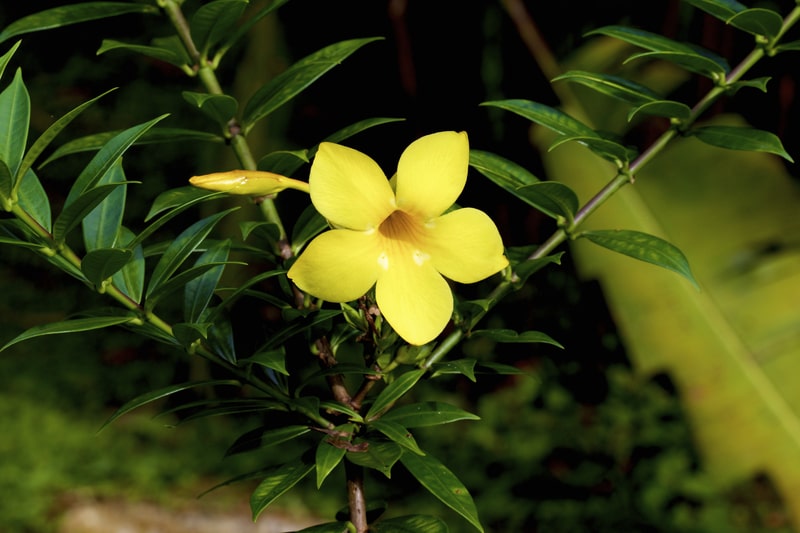
42. The South Carolina state flower is the Yellow Jessamine. The Yellow Jessamine has been used historically for various medicinal purposes, and it’s been used to treat mental illnesses, the flu, sore throats, and much more. It continues to be used for medicinal purposes today, and people use it to treat headaches, as a sedative, and more.
43. Congaree National Park is home to more than two dozen champion trees or trees which are the largest of their kinds. The park is home to the largest concentration of champion trees in the country.
44. Boone Hall Plantation, established in 1681 by Major John Boone, is a historic landmark in Mount Pleasant, S.C. that is home to a main colonial house and various brick slave cabins at the back. This is one of the oldest plantations that are still operational in the US today.
45. Located in Cleveland, South Carolina, Raven Cliff Falls is the highest waterfalls in the state. At an estimated 420 feet high, these falls are visited by many locals and tourists on a regular basis.
46. Sturgis motorcycle rally (held in South Dakota) is the world’s largest motorcycle rally. It started in 1938 and was suspended only during the World War II gas shortages. Motorcycle enthusiasts from all over the globe come together at the event. In 2018, an estimated 500,000 people participated in the rally.
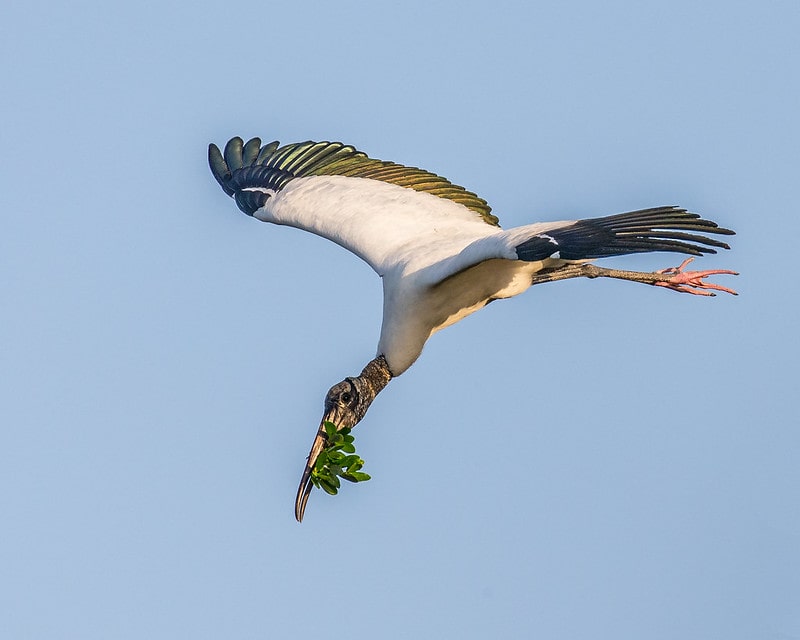
47. The wood stork is the only true stork that regularly occurs in the U.S.A. In flooded, shallow wetlands, it can fish by holding its beak open and snaps up the fish that swim by. It is about 33-44 inches in height and has a wingspan of 59-65 inches. The life span of the wood stork is about 11 years and 8 months in the wild.
48. The South Carolina state bird is the Carolina Wren. The Carolina wren is a colorful bird that loves to sing. They don’t do well in harsh winter weather, which is why they prefer living in warmer climates like South Carolina, Georgia, and Florida.
49. Bomb Island is the first purple martin sanctuary in North America. Every summer 750,000 birds fly back to the island to roost in the trees. The island is uninhabited and is off-limits to human visitors in the summer when the birds come to roost.
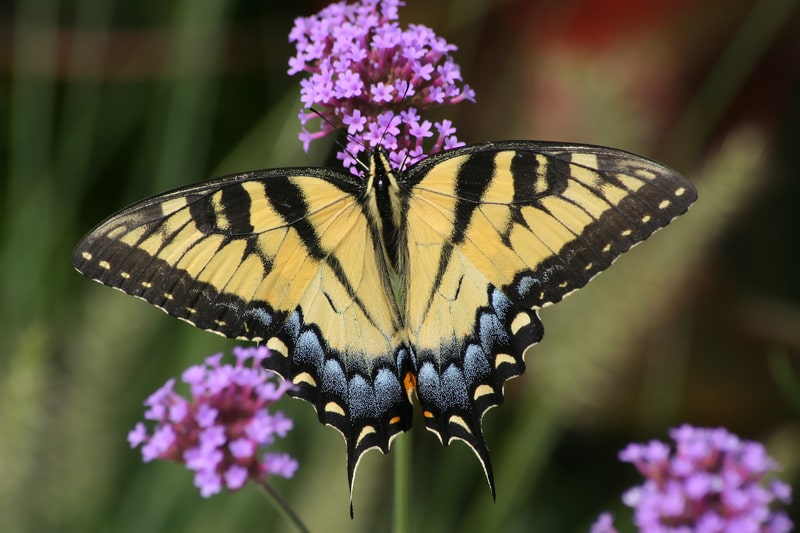
50. South Carolina’s state butterfly is the Eastern Tiger Swallowtail. This butterfly species was chosen to be the state butterfly in 1994 by the South Carolina General Assembly. This particular insect was chosen due to the many beautiful gardens within the state that are pollinated by this butterfly.
51. River Otters, the largest member of the weasel family, are indigenous to South Carolina. Every litter has two to three pups, and they are born with fur.
52. There is an island called “Monkey Island” on the state. The island is said to be home to more than 3,000 monkeys. Some say that the monkeys on the island are being used for research purposes.
53. South Carolina’s state reptile is the loggerhead turtle. It can live for fifty years in the wild and can weigh up to 400 pounds.
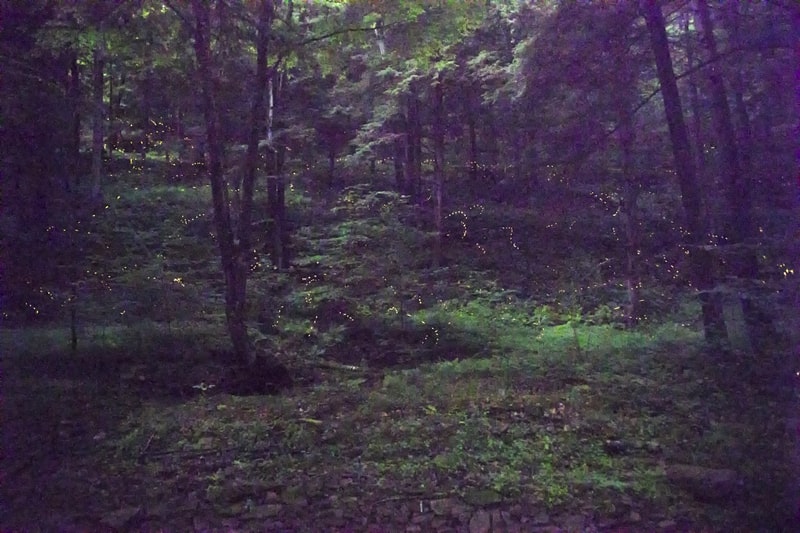
54. Synchronous fireflies or fireflies that light up at the same time are found in only a very few places around the world, mostly in Southeast Asia. A colony of these fireflies lives in Congaree National Park and the natural light show can be seen from May to June.
55. Common law marriage is when a couple is considered to be legally married without obtaining a marriage license or going through a ceremony after they have lived together as if they were married for a specific period of time. South Carolina is one of the few remaining states that still recognizes common-law marriage. Most states in the U.S. outlawed common-law marriage many years ago, but South Carolina still honors them.
56. You are not allowed to fish with a yo-yo in South Carolina. It may sound funny, but this is a way of fishing with up and down movements, mainly to catch crappie fish.
Notable inventions from South Carolina
57. The first antibody labeling agent was designed by Joseph Burkhalter from Columbia, South Carolina. The invention makes it possible to diagnose infectious diseases quickly.
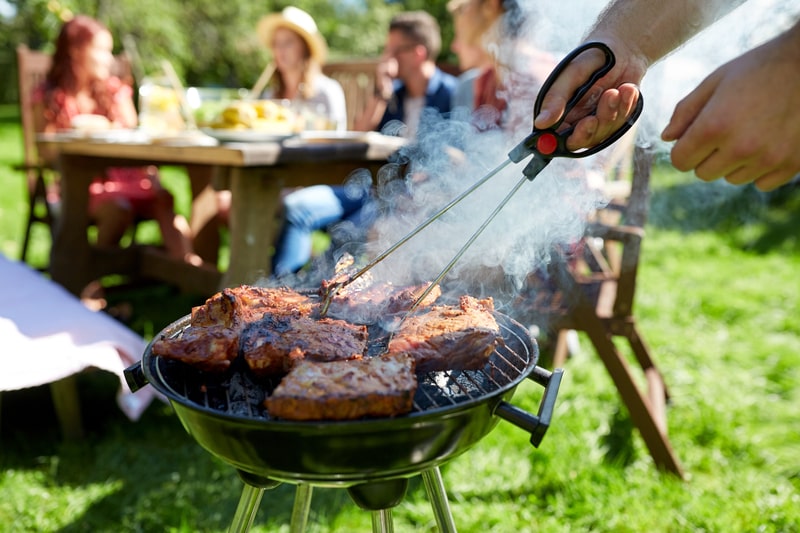
58. South Carolina is believed to be the birthplace of barbecue. Spanish explorers that settled in an abandoned French settlement near Charleston mingled with the native Americans living there. These native tribes were known to cook whole animals over stick frames. The Spanish settlers were believed to have brought and raised pigs in this settlement for food. With the native knowledge of roasting entire animals over flames and the Spanish introducing the pig as an animal that can be eaten for its meat, many historians believe that this is how both groups came to cook the first barbecue.
59. Research from the biologist and academic Ernest Just, from Charleston, South Carolina, led to the first egg fertilizer. Most noted was his research in developing organisms.
60. The Greenville, South Carolina inventor Gerald Barber invented wind turbines. His invention changed the US landscape and made it possible for many to have green energy.
61. South Carolina has been credited with Hunley’s invention of the submarine in 1863. The first submarine was named the H.L. Hunley by its creator.
. . . continue reading facts about South Carolina on the next page
